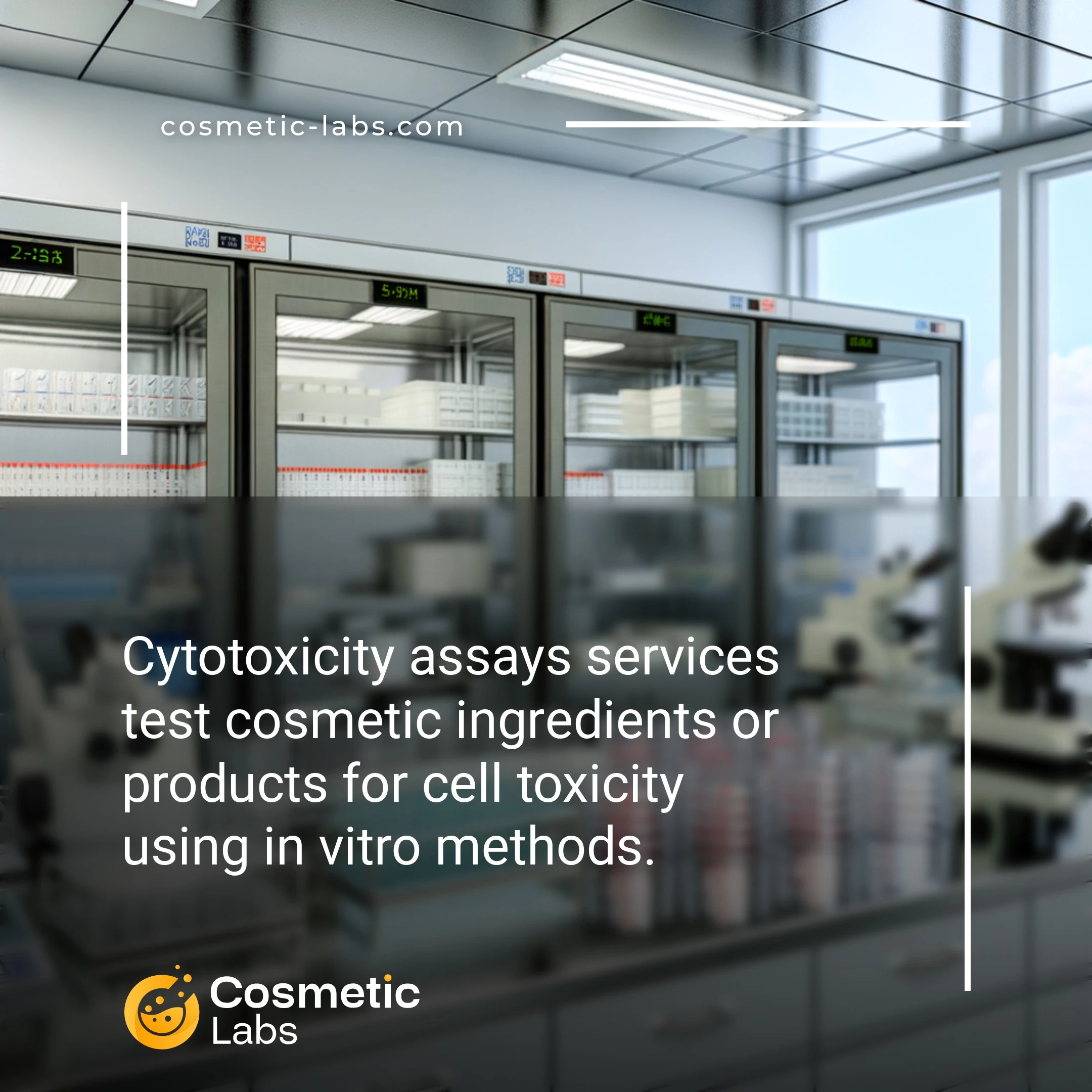Cytotoxicity Assays Services for Safe Cosmetic Product Development

What is Cytotoxicity assays?
Cytotoxicity assays measure how cosmetic ingredients and formulations affect living cells, using methods like MTT and neutral red uptake tests to determine safe concentration ranges. These cell-based safety assessments help labs identify potential irritants before moving to more extensive testing, saving both time and development costs. What many don’t realize is that modern 3D tissue models can predict human skin reactions with 85% accuracy, making these tests increasingly reliable alternatives to traditional methods.
Why do you need this service?
Cosmetic labs use cytotoxicity assays to screen new preservative systems at different concentrations, helping you find the sweet spot between product safety and microbial protection. These tests also validate botanical extract safety before formulation, giving you concrete data for marketing claims while meeting regulatory requirements for your target markets.
Who provides Cytotoxicity assays services?
All cosmetic labs providing Cytotoxicity assays services
There is no company providing these services at the moment.
Cytotoxicity Testing Services for Cosmetic Products
Cytotoxicity assays measure how your cosmetic ingredients and formulations affect living cells, providing early safety data before moving to more extensive testing. These cell-based safety tests help you identify potentially harmful ingredients quickly and cost-effectively.
Standard Cytotoxicity Test Methods
Labs on our platform offer several validated cytotoxicity testing approaches for cosmetic products. The MTT assay remains the most popular choice, measuring cell viability through metabolic activity after exposure to your test materials.
Common cytotoxicity tests include:
- MTT and XTT colorimetric assays (24-72 hour turnaround)
- Neutral Red Uptake (NRU) tests for lysosomal integrity
- LDH release assays detecting membrane damage
- ATP luminescence tests for rapid screening
Most labs provide IC50 values (concentration causing 50% cell death) to help you establish safe concentration ranges for your formulations.
Cell Lines and Testing Applications
Partner labs maintain various cell lines suited to different cosmetic applications. Human keratinocytes work well for skin care products, while corneal epithelial cells suit eye-area cosmetics. Fibroblast cultures help assess anti-aging ingredients.
Testing typically covers:
- Raw materials and active ingredients
- Finished product formulations
- Preservative systems at use concentrations
- Natural extracts and botanical ingredients
Results usually arrive within 5-7 business days, including dose-response curves and photographic documentation. Labs can adapt protocols to match your specific product types and regulatory requirements, whether you’re developing leave-on creams or rinse-off cleansers.
Key Applications of Cytotoxicity Testing in Cosmetic Development
Cytotoxicity assays serve as the foundation for evaluating whether your cosmetic ingredients and formulations are safe for human cells before moving to more extensive testing phases.
Raw Material Screening and Ingredient Safety Assessment
Labs use cytotoxicity assays to evaluate new cosmetic ingredients at various concentrations, determining safe usage levels for your formulations. MTT and neutral red uptake assays measure cell viability after exposure to test materials, providing IC50 values that guide formulation decisions.
This screening process typically takes 48-72 hours and helps identify potentially harmful ingredients early. Labs test both individual ingredients and ingredient combinations, revealing unexpected interactions that might affect product safety.
| Assay Type | Cell Lines Used | Turnaround Time | Key Output |
|---|---|---|---|
| MTT Assay | HaCaT, 3T3 | 48-72 hours | IC50 values |
| Neutral Red | NHEK, HDF | 24-48 hours | Cell viability % |
| LDH Release | HaCaT, NHEK | 24 hours | Membrane damage |
| XTT Assay | 3T3, HDF | 48 hours | Metabolic activity |
Finished Product Testing and Batch Validation
Before launching your cosmetic products, labs perform cytotoxicity testing on complete formulations to verify overall safety profiles. These tests evaluate how your finished products interact with human skin cells, using reconstructed human epidermis models or primary cell cultures.
Testing protocols follow ISO 10993-5 guidelines, examining direct contact and extract methods. Results provide quantitative data on cell survival rates, helping you demonstrate product safety to retailers and regulatory bodies while building consumer confidence in your brand.
Ready to ensure your cosmetic products meet safety standards? Connect with specialized testing labs on our platform that offer cytotoxicity assay services tailored to your product development needs.
